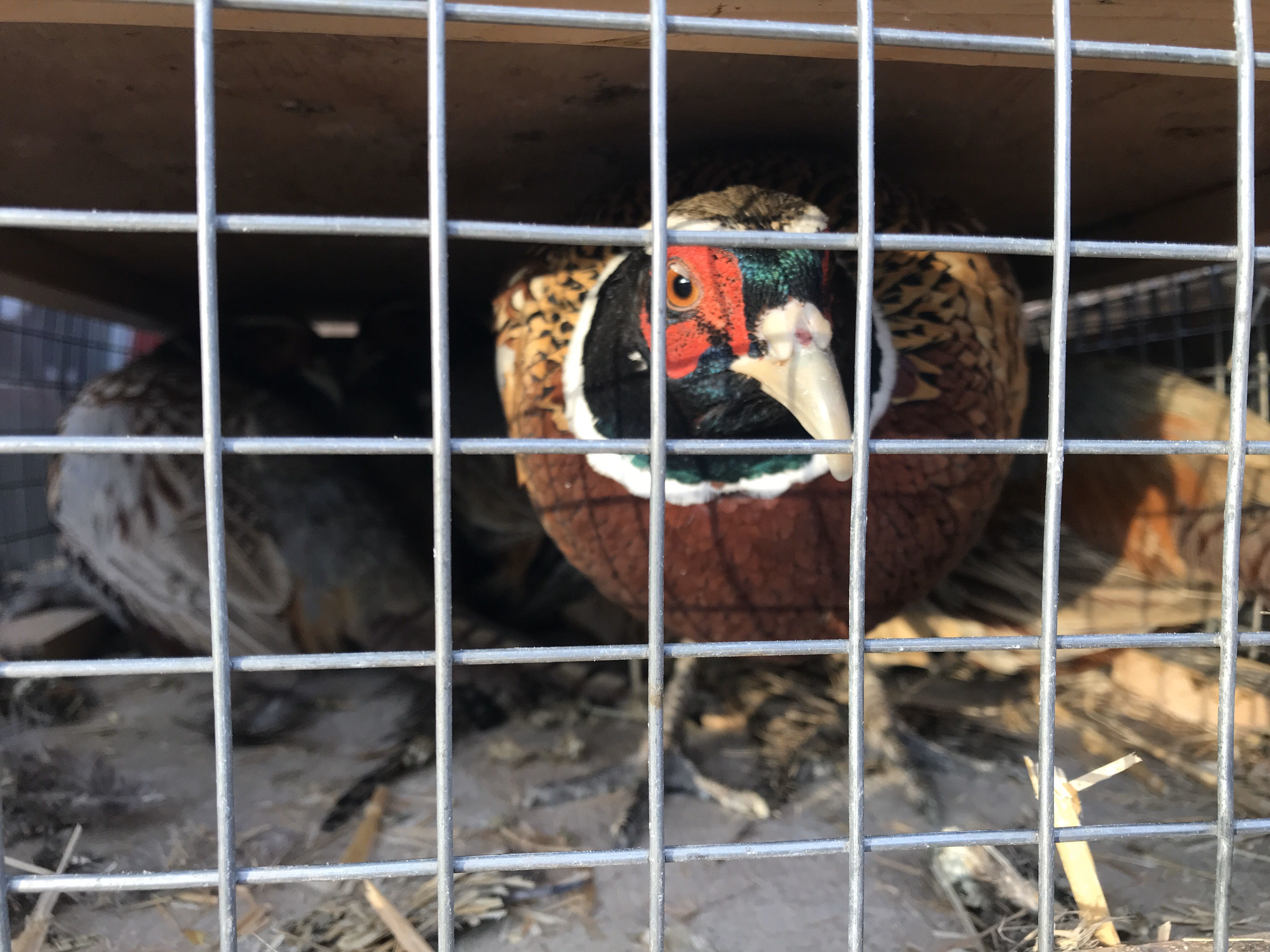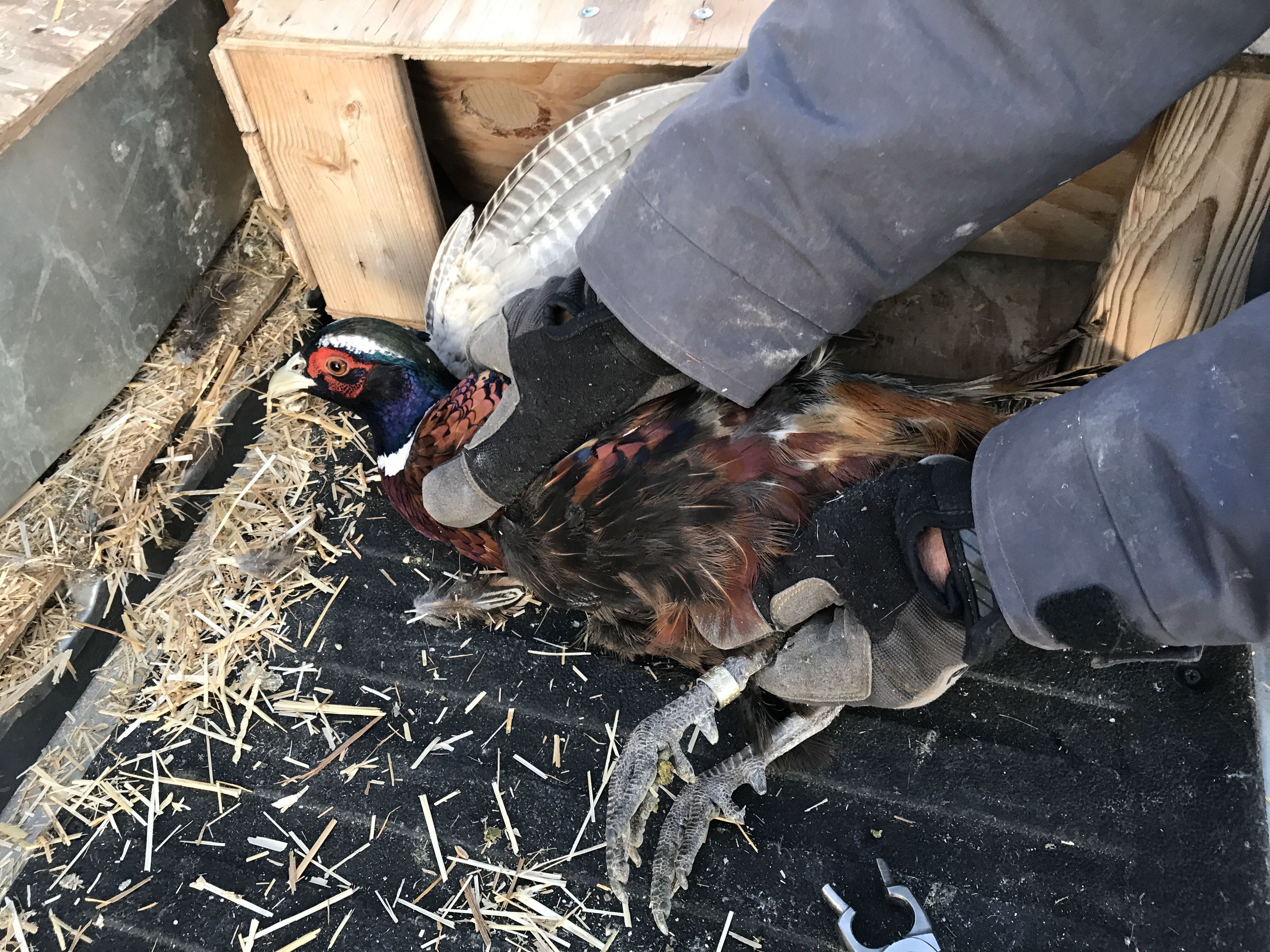Pheasant season arrived in southeast Idaho on October 19 with some stormy weather… but for some it still didn’t dampen the excitement of getting out in the field-- shotgun in hand-- and enjoying the experiences associated with upland game bird hunting.
Here in the Southeast Region, one of the best places to hunt pheasant is the Sterling Wildlife Management Area (WMA) near Aberdeen which offers excellent pheasant habitat and premier opportunities for both the beginner and seasoned hunter.
This fall, sportsmen and sportswomen hunting Sterling WMA may find that their harvested rooster pheasants have metal leg bands. Hunters may keep the leg bands, but Idaho Fish and Game is asking hunters to please report the bands by calling 208-236-1254 and listening to the voicemail instructions.
Hunters will be asked to provide the following information for each banded bird they harvest:
- date of harvest;
- location on the WMA where the bird was harvested;
- band color and band number;
- number of days hunted; and,
- number of birds harvested per day.
Fish and Game appreciates the support and cooperation of hunters in this pheasant harvest study as it will help wildlife managers better understand more about the pheasant stocking program at the WMA, in particular how many pheasants are harvested and within what timeframe after release. Sterling WMA is the only WMA in Idaho on which this particular study is being conducted.
What else should you know before hunting pheasants at Sterling WMA?
- Any person 18 years old or older MUST purchase a WMA permit to hunt pheasants on a WMA where pheasants are stocked. Each permit allows the take of six pheasants and must be validated when a pheasant is reduced to possession.
- Shooting hours start at 10:00 am and go until one-half hour after sunset.
- Remember that all upland game and upland bird hunters are required to wear visible hunter orange (minimum of 36 square inches) above the waist during pheasant season when hunting on a WMA where pheasants are stocked. A hunter orange hat meets this requirement.
- Bag limit is 2 roosters, 6 in possession.
- Pheasant season runs through November 30.
Did you know?
- The Ring-necked pheasant (Phasianus colchicus) was brought over to the United States from Asia by farmers and sportsmen. The first successful pheasant population was established in Oregon’s Willamette Valley in 1881.
- Idaho’s earliest pheasant planting was near Kamiah in 1903.
- Pheasants are found on or near irrigated croplands, stream banks, or marshy areas.
- Pheasants eat corn, wheat, oats, and other grains as well as seeds, plants, and berries.
- Pheasants require dense cover, especially during the winter. Cattails, willows, sagebrush, and overgrown fence rows, hedges, canal banks, and roadsides are important components of pheasant habitat.
- As ground nesters, a hen pheasant will lay between 8 and 14 eggs. Compare that to the small clutch size of a tree-nesting bird like a robin. Ground nesters lay more eggs because their nests are more susceptible to many natural and man-made dangers.
- After a chick hatches, it is practically ready-to-go. Once its down dries, it can follow the hen out of the nest and begin eating on its own.
- Pheasant chicks begin short, “bumble-bee like” flights starting as early as 2 weeks, and are fully feathered by 6 weeks.
- Although a hen may lay as many as three clutches of eggs if disturbed when nesting, she produces only one brood a year.
- Idaho Fish and Game will be releasing nearly 3,000 pheasants across Sterling WMA during the pheasant hunting season this fall.
- Shooting hours, bag limits, season lengths and other rules vary by region of the state and are not the same for WMAs stocked with pheasants. Hunters should read pages 12 through 16 of the Idaho Upland Game, Turkey, and Furbearer 2018/2019 Seasons and Rules before heading out. This information can also be found on Fish and Game’s homepage at https://idfg.idaho.gov.



